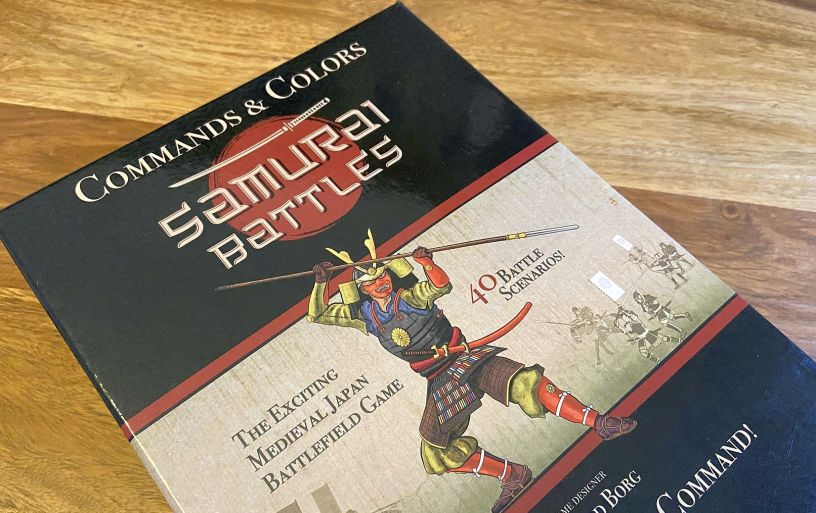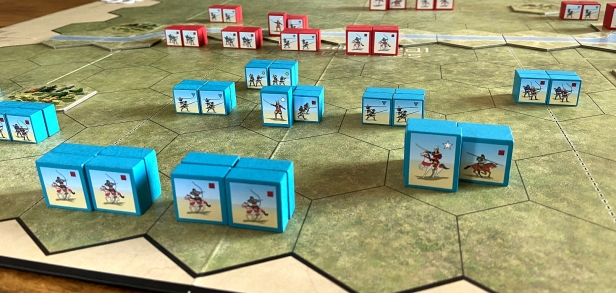| About game: | GMTs Commands & Colors Samurai Battles is a great re-implementation of this classic title from Zvezda company. The game allow players to portray important engagements of Japanese history – mainly 15th century AD. The battles, included in the scenario booklet, focus on the historical deployment of forces and important terrain features in scale with the game system. The scale of the game is flexible and varies from battle to battle. For some scenarios, an infantry unit may represent an entire clan of soldiers, while in other scenarios a unit may represent just a few brave warriors. What I really like is grouping some of the scenarios into the linked, chronological and logically connected sets. This usually means some particular battle being separated into couple of phases. That process can be done based on timeline with battle interlude, main action and final phase. But we shall also see the split based on troops location – like overview scenario, left flank, right flank, etc. I find both approaches enjoyable and allowing for much closer familiarization with the particular historical event. The game follows the well-proven mechanics of Commands (cards driving the moves and creating Fog of War) and Colors (the units designation, having huge impact on battle). The dices allows us to quickly resolve all battles and the components in the box allow for creation of countless scenarios. In essence, Richard Borg at his best! Would you stand-up to the task and manage to prevail against your opponent, securing Japan for your clan? |
| Number of players: | As with the all Base Versions of the Commands & Colors games, this is purely 2 player position. I expect – just like with Ancients or Napoleonics – that with time we will get the EPIC expansion, increasing possible number of players to 4-8. I also hope that GMT One initiative will create a playable solo version for that title. |
| Playing time: | The usual scenarios take on average 45-60 minutes. There are some larger set-ups which can go over that threshold, but all in all, this is rather a short wargame. Thus you play a lot of scenarios in one evening! |
| Complexity: | Definitely a medium-complex C&C game – mainly due two decks of cards. Slightly more rules then in Ancient, much less then in Napoleonic, similar in numbers to Medieval. However, in comparison to other Wargames, this is definitely light position. |
| What I like: |
|
| What I do not like or would like to see in the game: |
|
| For whom? | Of course, first and foremost for C&C fans – specifically the ones willing to learn more about Japan history. But in the end, this is a fantastic light wargame for everybody. Especially if you want to encourage somebody to our hobby! |
| More about the game: | |
And now let us have a look at the components – all pictures & videos from my plays:

VERDICT:

The Commands Colors Samurai Battles by GMT Games is definitely very good, logical continuation of those light wargames family. It is beautiful game – a vivid red and blue blocks looks fantastic on the pastel board, it has already 40 scenarios in base game, it features two card decks and allows for a really close and enjoyable plays!
I can definitely recommend this both to veterans of the system but also to new players who would like to familiarize themselves with fantastic world of Commands and Colors. Strongly recommended! See you in another game review!




